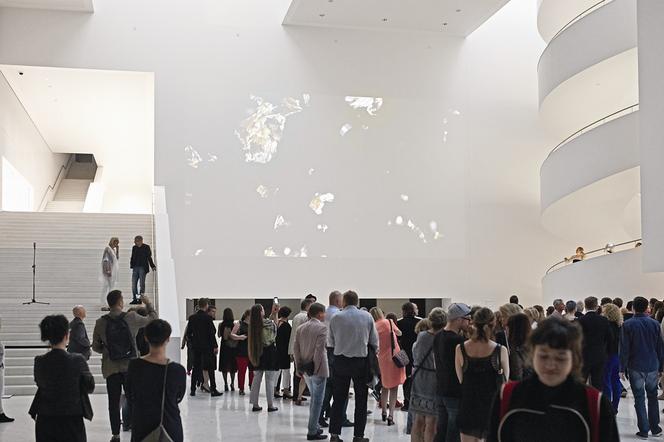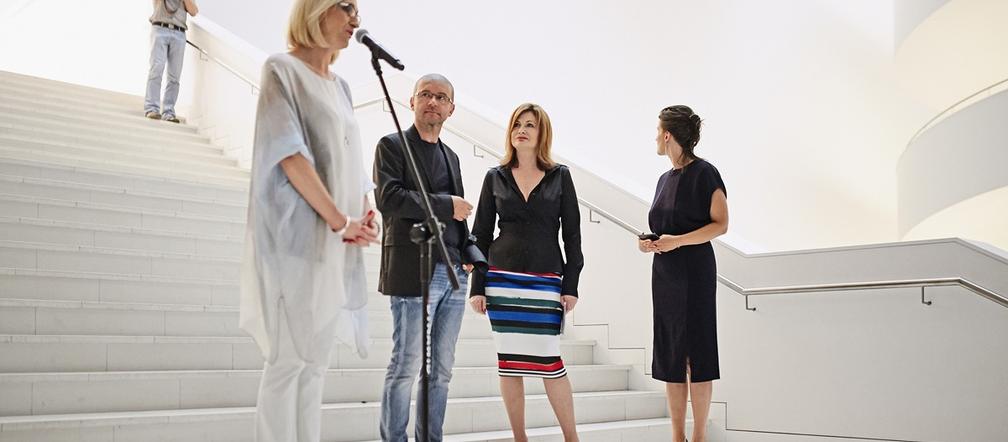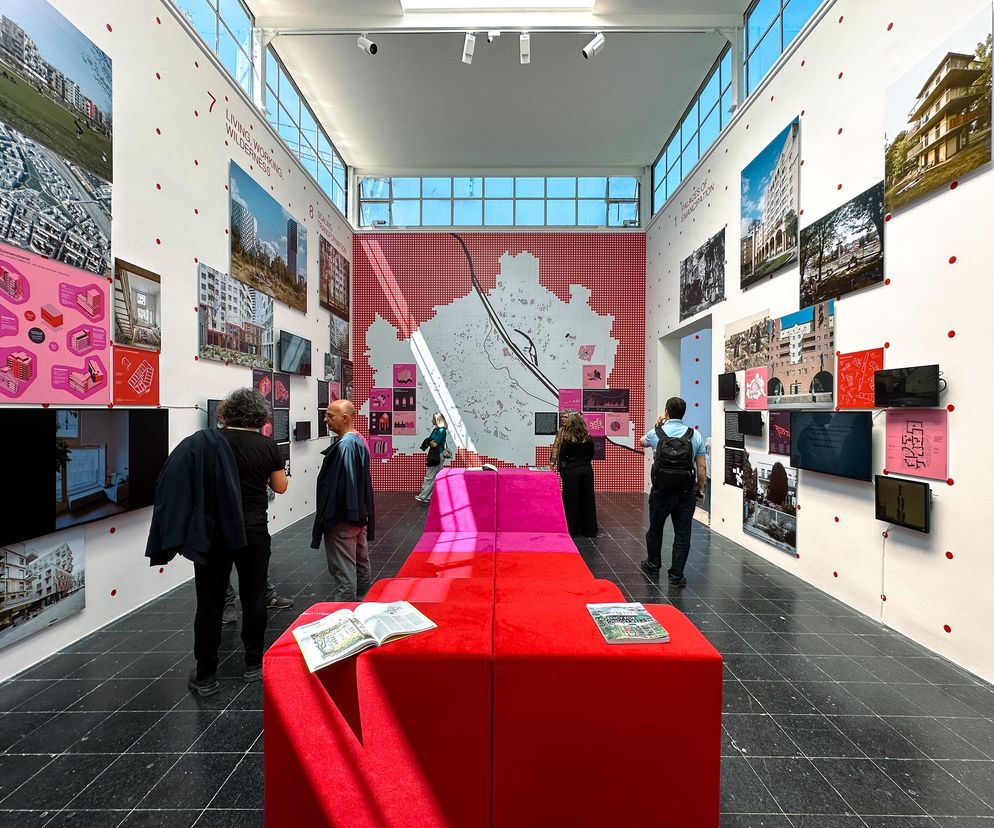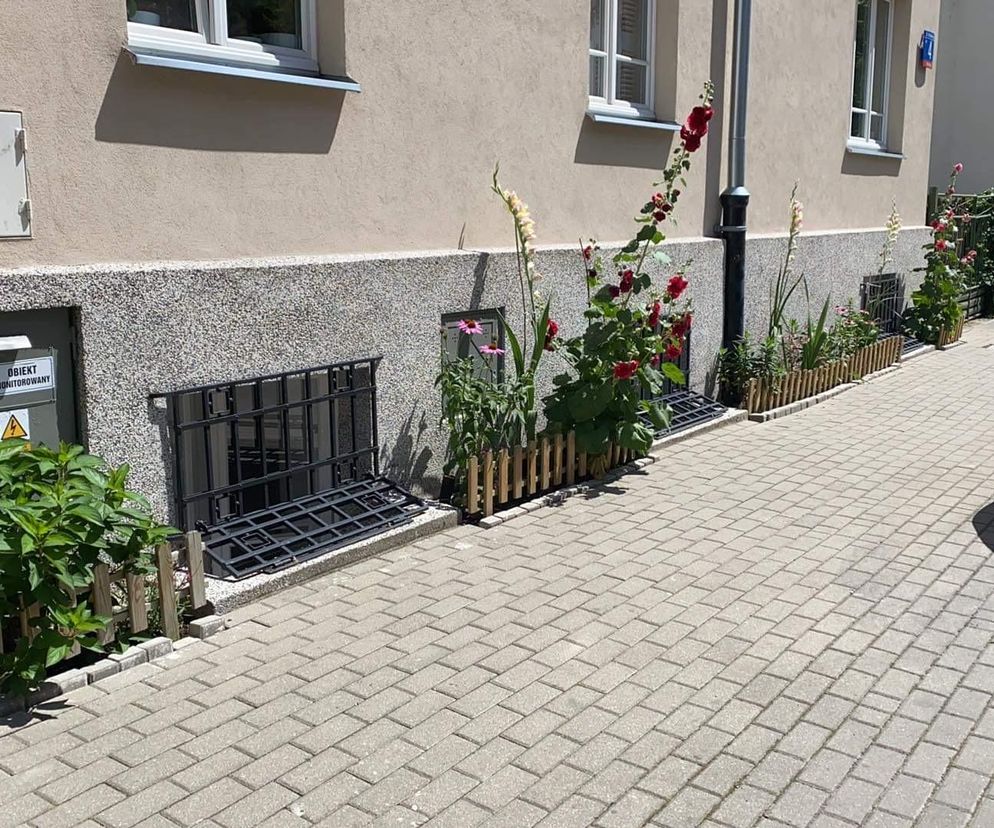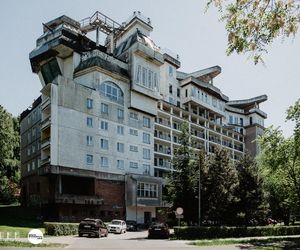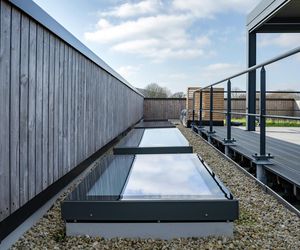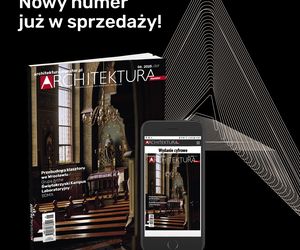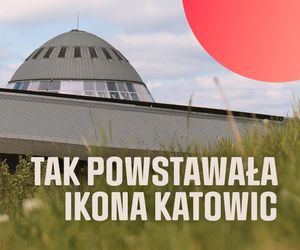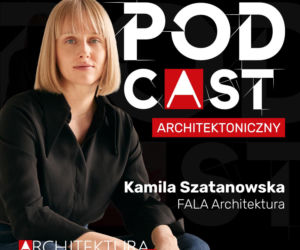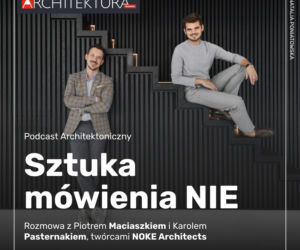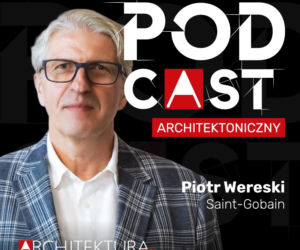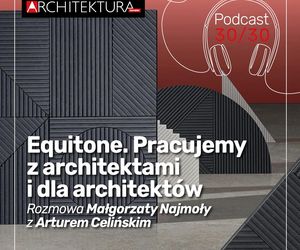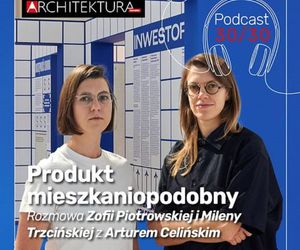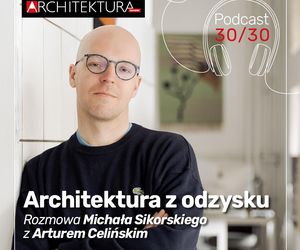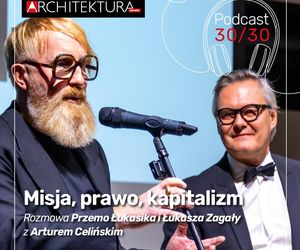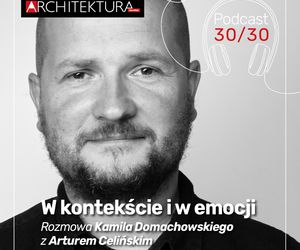W 2015 roku budynek Filharmonii im. Mieczysława Karłowicza w Szczecinie autorstwa Estudio Barozzi Veiga uhonorowany został europejską nagrodą im. Miesa van der Rohe. Stało się to inspiracją dla dyrekcji Filharmonii do stworzenia dedykowanej architekturze wystawy.
Jak architektura wpływa na muzykę, a muzyka na architekturę? Czy nawzajem się stymulują? Czy można przełożyć architekturę na dźwięk, a dźwięk wyrazić poprzez architektoniczną formę? Aby przybliżyć się do odpowiedzi na te pytania, postanowiliśmy zbadać relacje architektury i muzyki na przykładzie pięciu niezwykłych sal koncertowych Europy, zrealizowanych w ostatnich latach: Filhar- monii im. Mieczysława Karłowicza w Szczecinie (2014), Norweskiej Narodowej Opery i Baletu w Oslo (2008), sali koncertowej w Blaibach (2014), sali koncertowej i centrum konferencyjnego Harpa w Reykjavíku (2011) oraz sali koncertowej Casa da Música w Porto (2005).
Te wielokrotnie nagradzane, wyjątkowe budynki poddane zostaną jednocześnie architektonicznej, jak i artystycznej interpretacji, w poszukiwaniu fenomenu ich unikalności. Krajobraz, klimat, bezpośrednie otoczenie, historia miejsca, kraj, w którym dzieło powstało, a także publiczność, ruch, osobiste doświadczenia twórców, wykonawców, użytkowników – te i wiele innych czynników wpływają nie tylko na formę, na kształt architektury, ale przede wszystkim wyraz, czy wręcz ducha obiektu – jestem bowiem głęboko przekonana, że wybitne dzieło architektury emanuje swego rodzaju aurą, wymykającą się zwykłemu ludzkiemu doświadczeniu.
Dlatego projekt Architektura muzyką przestrzeni przebiegać będzie dwutorowo – z jednej strony w formie fotograficznej i przestrzennej dokumentacji dzieła architektury, z drugiej jako działania artystyczne zmierzające do ujawnienia jego transcendentnego fenomenu („thought forms”) i stworzenia / odkrycia wypływającego z natury miejsca, unikalnego dźwięku dla budynku. Trwałość architektury (w postaci zdjęć obiektów) zestawiona zostanie z ulotnością głosu i jego przestrzennego zobrazowania (dźwięk + obraz).
Architektoniczną analizę pięciu wybitnych sal koncertowych Europy przedstawi jeden z najbardziej znanych polskich architektów –Robert Konieczny, twórca przyległego do Filharmonii w Szczecinie, zaliczanego do najlepszych przestrzeni publicznych w Europie Centrum Dialogu Przełomy; a unikalne brzmienia Filharmonii i jej transcendentny obraz ujawni artystka Katarzyna Krakowiak, wielokrotnie nagradzana za prace z dziedziny rzeźby, architektury i dźwięku. Powstałe / odkryte brzmienia pozostaną wyłączną własnością Filharmonii i traktowane być mogą jako dźwięki zapraszające publiczność na salę koncertową, czy poprzedzające szczególne wydarzenie.
Ewa P. Porębska/Kurator wystawy
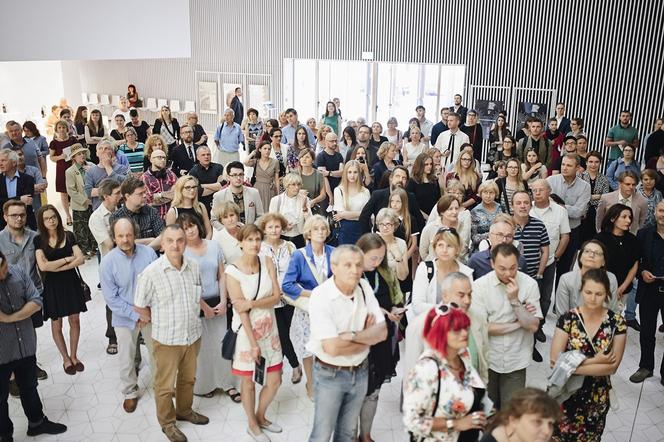
i
Jednych irytowała, inni ulegli jej urokowi już od pierwszego wejrzenia, dla nikogo nie była jednak obojętna. Dzisiaj Filharmonia w Szczecinie to przede wszystkim miejsce budzące ciekawość, w którym nie tylko szczecinianie chcą doświadczać pozytywnych emocji.
Dwuspadowy, strzelisty dach wniknął w przestrzeń, uzupełniając horyzont. Zbudowany z klasycznych kamienic i neogotyckich kościołów, pozornie dysonansowy akord, czyli biała, półprzezroczysta elewacja gmachu, współgra teraz z czerwienią Komendy Policji i jest wyrazistym kontrapunktem dla szarej bryły Centrum Dialogu Przełomy. Filharmonia wtopiła się w tkankę miejską, nie tracąc nic ze swojej oryginalności i wielopoziomowej symboliki, odczytywanej zarówno w kontekście historycznym, jak i kulturowym i społecznym.
Każdy koncert to odkrywanie wyjątkowości miejsca, ale też możliwość wyjścia poza „tu i teraz”. W tej niezwykłej czasoprzestrzeni zarówno pojedynczy dźwięk, jak i monumentalne współbrzmienie nabiera nieco metafizycznego znaczenia, czytelnego dla wytrawnych melomanów i dla rozpoczynających dopiero swą muzyczną podróż. Odwaga i konsekwencja w kształtowaniu formy w połączeniu z wyjątkową starannością opracowania detalu jest dla nas niezmiennie inspiracją do kreowania nowatorskich projektów i podejmowania kolejnych wyzwań artystycznych, aby Filharmonia codziennie była ważnym i barwnie rozbrzmiewającym instrumentem dynamicznie zmieniającego się miasta.
Mimo dominującej bieli, Filharmonia w Szczecinie mieści w sobie całą paletę kolorów: od pieśni i tradycyjnych brzmień muzyki źródeł, przez kameralne utwory autorstwa dawnych i współczesnych kompozytorów, aż do jazzu, muzyki improwizowanej i elektronicznych eksperymentów, a także innych form i gatunków, dla których teoretycy dopiero znajdą odpowiednie nazwy. Akustyka złotej sali symfonicznej przyciąga do Szczecina najciekawszych dyrygentów, solistów i zespoły z całego muzycznego świata. Zapewniając pełną amplitudę wrażeń, spełniamy marzenia – zarówno indywidualne- i grupowe, jak i nasze.
Wrażliwości na dźwięki nie musimy uczyć, ale często niezbędny jest mały impuls i dobra przestrzeń. Stąd Filharmonia to miejsce dla każdego poszukiwacza dobrych emocji i energii. Każdy może u nas liczyć na to, że jest tym jedynym i wyjątkowym. My też czujemy się tu wyjątkowo. To odpowiedzialność i wyzwanie, ale też wolność i poczucie, że w tym miejscu możemy być sobą. A wszystko zaczęło się od pozornie abstrakcyjnego marzenia, aby w Szczecinie powstała nowa Filharmonia. Dzisiaj nie poprzestajemy na tym marzeniu. Marzymy, aby Filharmonia przekraczała granice swojej siedziby i Szczecina, by była w ciągłym ruchu. Chcemy, by każdy odkrywał tu własną przestrzeń muzyki.
Dorota Serwa/Dyrektor Filharmonii im. Mieczysława Karłowicza w Szczecinie
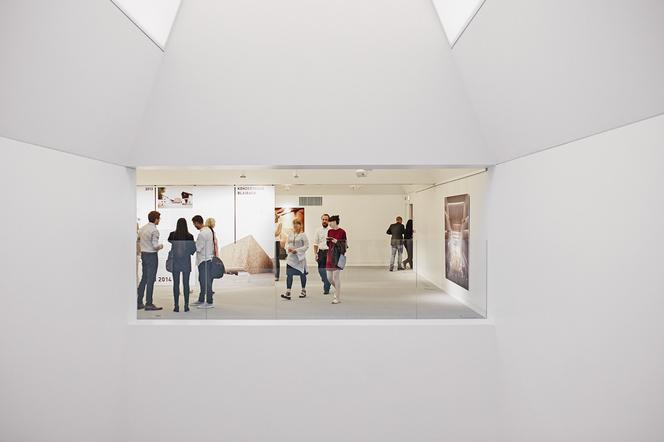
i
[EN] In 2015, the Mieczysław Karłowicz Philharmonic Hall in Szczecin, designed by Estudio Barozzi/Veiga, received the European Union Prize for Contemporary Architecture – Mies van der Rohe Award. This fact inspired the management of the Philharmonic to create an exhibition dedicated to architecture.
How does architecture influence music; how does music influence architecture? Do they stimulate each other? Is it possible to translate architecture into sounds, and express sounds through an architectural form? To try and come closer to answers to these questions, we have decided to follow relations of architecture and music on the example of five recently constructed exceptional concert halls: the Mieczysław Karłowicz Philharmonic Hall in Szczecin (2014), National Opera and Ballet in Oslo (2008), Concert Hall in Blaibach (2014), Harpa Concert Hall and Conference Center in Reykjavík (2011), and Casa da Música concert hall in Porto (2005).
In the quest for the phenomenon of their uniqueness, these much-awarded, superb buildings will be subject to architectural and artistic interpretation. Landscape, climate, close surroundings, history of the place, the country where the hall was constructed, as well as the public, movement, personal experiences of their creators, performers and users – all these and other factors combine to influence not only the form and shape of architecture, but above all the expression, even spirit of the building. I am deeply convinced that an outstanding work of architecture emanates a certain aura, which escapes everyday human experience.
This is why the Architecture Is The Music Of Space project is to have two aspects: it will be a photographic and spatial documentation of architecture, but also an act of art aimed at revealing its transcendent phenomenon (“thought form”) and creating / discovering a sound, unique for the building and resulting from the nature of the place. The durability of architecture (presented in photographs of the halls) will be juxtaposed with the ephemeral character of the voice and its spatial imaging (sound + image).
An architectural analysis of the five superb European concert halls will be presented by Robert Konieczny, one of the most renowned Polish architects, designer of the Przełomy Center for Dialogue extending next to the Szczecin Philharmonic Hall and counted among the best public spaces in Europe. Unique sounds of the Philharmonic and its transcendent image will be revealed by artist Katarzyna Krakowiak, much-awarded for her works embracing sculpture, architecture and sound. The created / discovered sounds will remain an exclusive property of the Philharmonic and may be used as sounds inviting the public to a concert, or heralding an exceptional event.
Ewa P. Porębska/Curator of the exhibition
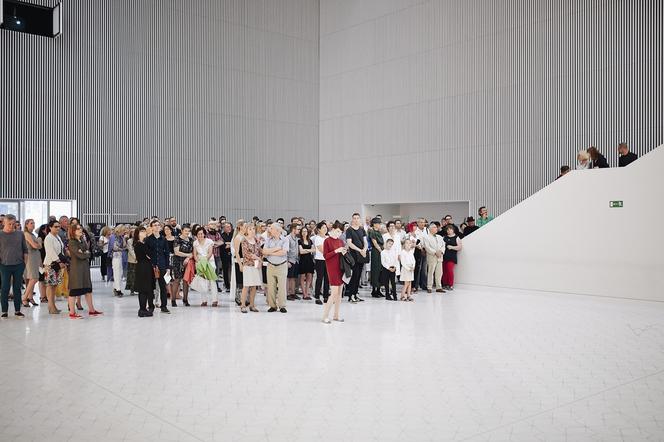
i
Some it irritated; others succumbed to its charms from their first glimpse of it; nobody was indifferent. Today the Szczecin Philharmonic is first and foremost a place that arouses interest, where not only Szczeciners want to experience positive emotions.
The slender gable roof has entered into the space, filling in the horizon. Built from classic row houses and neo-Gothic churches, this apparently dissonant chord – the white, translucent frontage of the building – now interacts with the red of the Police Headquarters and provides a distinct counterpoint to the grey mass of the Przełomy Dialogue Centre. The Philharmonic has merged into the urban tissue, without losing its originality or its multi-level symbolism, read not only in the historical context, but also those of culture and society.
Each concert is a discovery of an exceptional place, but also the opportunity to go beyond the here and now. In this exceptional time and space, both an individual sound and a monumental harmony take on something of a metaphysical meaning, intelligible to seasoned music lovers and to those just beginning their musical journeys.
Boldness and consistency in shaping the form, in combination with exceptional attention to detail, is for us a constant inspiration to create innovative projects and take up new artistic challenges, which allows the Philharmonic each day to be an important and colourfully resounding instrument, dynamically changing the city.
Despite the dominance of white, the Szczecin Philharmonic contains a whole palette of colours: from the songs and traditional sounds of folk music, through chamber pieces created by ancient and modern composers, all the way to jazz, improvised music and electronic experiments, as well as other forms and types, for which the theoreticians are only now finding the appropriate names. The acoustics of the golden symphony hall draw to Szczecin the most interesting conductors, soloists and groups from the entire musical world. In assuring the full amplitude of impressions, we fulfil dreams – dreams of individuals and of groups, as well as our own.
We don’t need to teach sensitivity to music, but often it’s essential to supply a slight nudge, and a good space. Thus the Philharmonic is a place for everyone seeking good emotions and energy. Everyone can be sure that with us they’ll find that which is unique, exceptional. We also feel exceptional here: There’s responsibility and a challenge, but also freedom, and the feeling that in this place we can be ourselves. And it all started form a seemingly abstract dream, that of having a new Philharmonic in Szczecin. Today we’re not stopping with this dream. We dream that the Philharmonic will transcend the boundaries of its building and of Szczecin, will be in constant movement. We want everyone to discover their own Musical space here.
Dorota Serwa/Director of the Mieczysław Karłowicz Philharmonic in Szczecin
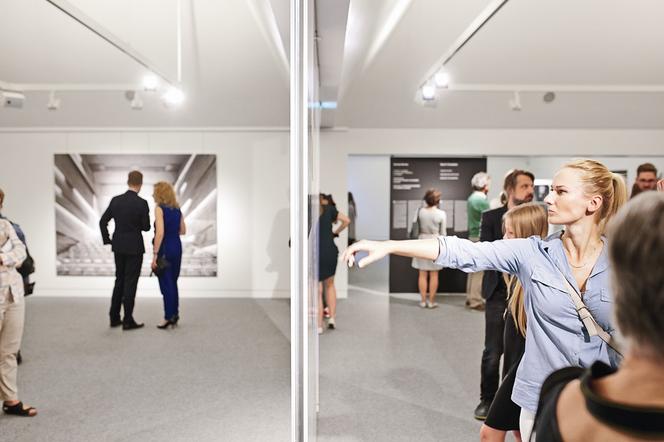
i
[DE] Im Jahr 2015 wurde das Gebäude der Mieczysław-Karłowicz-Philharmonie in Stettin, welches durch Estudio Barozzi Veiga entworfen wurde, mit dem europäischen Mies-van-der-Rohe-Preis ausgezeichnet. Dies wurde für die Direktion der Philharmonie zur Inspiration für die Eröffnung einer der Architektur dedizierten Ausstellung.
Welchen Einfluss hat die Architektur auf die Musik und die Musik auf die Architektur? Stimulieren sie sich gegenseitig? Kann die Architektur Vorrang vor der Musik haben und die Musik durch architektonische Form ausgedrückt werden? Um sich der Antwort auf diese Fragen zu nähern, haben wir beschlossen die Verhältnisse zwischen der Architektur und der Musik auf dem Beispiel von fünf einzigartigen Konzerthäusern in Europa, die in den letzten Jahren errichtet wurden, zu untersuchen: die Mieczysław-Karłowicz-Philharmonie in Stettin (2014), das Nationale Theater der Oper und des Balletts in Oslo (2008), das Konzerthaus in Blaibach (2014), das Konzert- und Konferenzhaus Harpa in Reykjavík (2011) und das Konzerthaus Casa da Música in Porto (2005).
Diese vielfach ausgezeichneten, einzigartigen Gebäude werden zugleich einer architektonischen und einer künstlerischen Interpretation, nach der Suche des Phänomens ihrer Einzigartigkeit, unterzogen. Die Landschaft, das Klima, die unmittelbare Umgebung, die Geschichte des Ortes, das Land in dem das Werk entstand, als auch das Publikum, die Bewegung, die persönlichen Erlebnisse der Schöpfer, der Gründer und der Nutzer – diese und viele andere Faktoren beeinflussen nicht nur die Form, die Gestalt der Architektur, sondern vor allem den Ausdruck oder gar den Geist des Objektes – ich bin nämlich tief davon überzeugt, dass ein einzigartiges architektonisches Werk eine gewisser Art Aura ausstrahlt, die außerhalb der gewöhnlichen menschlichen Erfahrung liegt.
Deshalb wird das Projekt Architektur Als Musik Des Raumes zweigleisig verlaufen – einerseits in Form von Photographie und der räumlichen Dokumentation des Architekturwerks, andererseits als künstlerische Handlungen, die auf die Offenlegung seines transzendenten Phänomens („thought forms“) und die Schöpfung / Entdeckung des aus der Natur des Ortes fließenden einzigartigen Klangs für das Gebäude ausgerichtet sind. Die Langlebigkeit der Architektur (in Form von Objektphots) wird mit der Vergänglichkeit der Stimme und ihrer räumlichen Darstellung (Ton + Bild) zusammengestellt.
Die Architektonische Analyse von fünf Konzerthäusern in Europa wird durch einen der berühmtesten polnischen Architekten Robert Konieczny, den Schöpfer des an die Philharmonie in Stettin anrainenden und zu den besten öffentlichen Räumen in Europa gezählten Centrum Dialogu Przełomy durchgeführt; die einzigartigen Klänge der Philharmonie und deren transzendentales Bild werden von der Künstlerin Katarzyna Krakowiak dargestellt, die mehrfach für Arbeiten aus dem Bereich Skulptur, Architektur und Ton ausgezeichnet wurde. Die entstandenen / entdeckten Klänge bleiben ausschließliches Eigentum der Philharmonie und können als das Publikum zum Konzerthaus einladende oder einem wichtigen Ereignis vorrangehende Klänge betrachtet werden.
Ewa P.Porębska/Kuratorin der Ausstelung
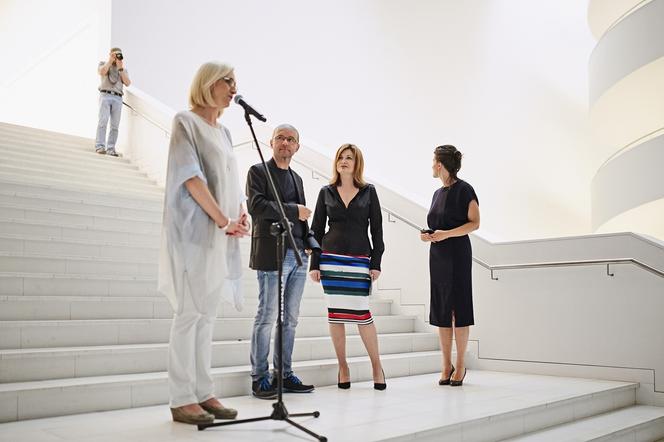
i
Die einen hat sie irritiert, die anderen wiederrum erlagen ihrem Scharm schon auf den ersten Blick. Niemandem war sie jedoch gleichgültig. Heute ist die Philharmonie in Stettin vor allem ein Ort, der Interesse weckt, in dem nicht nur die Einwohner von Stettin positive Gefühle erleben wollen.
Das emporstrebende Satteldach drang in den Raum ein und ergänzte den Horizont. Errichtet aus klassischen Mietshäusern und neogotischen Kirchen, scheinbar ein Dissonanz-Akkord, die weiße, halbdurchsichtige Fassade des Gebäudes korrespondiert jetzt mit dem Rot der Polizeidirektion und ist ein ausdrucksvoller Kontrapunkt für den grauen Körper des Museums Centrum Dialogu Przełomy. Die Philharmonie verschmolz mit der Stadtarchitektur ohne deren originelles Aussehen und mehrdimensionale Symbolik zu verlieren, die sowohl in historischer, als auch kultureller und gesellschaftlicher Hinsicht zu betrachten ist.
Jedes Konzert ist eine Entdeckung der Einzigartigkeit des Ortes, aber auch die Möglichkeit das „hier und jetzt“ zu verlassen. In dieser einzigartigen Raumzeit gewinnen sowohl jeder einzelne Ton, als auch das monumentale Mitklingen, sowohl für die Musikliebhaber, als auch für diejenigen, die sich auf ihre Musikreise erst begeben, eine etwas metaphysische Bedeutung.
Wagemut und Konsequenz in der Gestaltung der Form, in Verbindung mit der einzigartigen Sorgfalt in der Bearbeitung der Details, sind für uns unverändert die Inspiration für die Gestaltung von innovativen Projekten und für neue künstlerische Herausforderungen, damit die Philharmonie täglich ein wichtiges und farbig klingendes Instrument der sich dynamisch verändernden Stadt ist.
Trotz der dominierenden weißen Farbe, verbirgt die Philharmonie in Stettin eine ganze Farbenpalette in sich: von Liedern und traditionellen Klängen der Musik der Quellen, über Kammermusik der ehemaligen und der modernen Komponisten, bis hin zu Jazz, improvisierter Musik und zu elektronischen Experimenten, als auch bis hin zu anderen Formen und Arten, für die die Theoretiker erst entsprechende Bezeichnungen finden werden. Die Akustik des goldenen Symphoniesaals zieht nach Stettin die neugierigsten Dirigenten, Solisten und Musikgruppen aus aller Musikwelt an. Durch die Sicherstellung der vollen Amplitude der Erfahrungen, lassen wir Träume – sowohl die individuellen, als auch die Gruppenträume und unsere eigenen – wahr werden.
Die Empfindlichkeit auf den Ton muss von uns niemandem beigebracht werden, aber oftmals wird ein kleiner Impuls und guter Raum gebraucht. Daher ist die Philharmonie ein Ort für jeden, der nach guten Gefühlen und Energien sucht. Jeder kann bei uns damit rechnen, dass er der Einzige und der Einzigartige ist. Wir fühlen uns hier auch einzigartig. Es ist eine Verantwortung und Herausforderung, aber auch Freiheit und das Gefühl, dass wir an diesem Ort wir selbst sein können. Und das alles begann mit einem scheinbar abstrakten Traum, damit in Stettin eine neue Philharmonie entsteht. Heute möchten wir es bei diesem Traum nicht belassen. Wir träumen davon, damit die Philharmonie die Grenzen ihres Sitzes und von Stettin überschreitet, damit sie in ständiger Bewegung bleibt. Wir möchten, dass jeder hier seinen eigenen Musikraum entdeckt.
Dorota Serwa/Direktorin der Mieczysław-Karłowicz-Philharmonie in Stettin
Budynki prezentowane na wystawie:
Projekt artystyczny Katarzyny Krakowiak
- Kurator/Curator/Kurator: Ewa P. Porębska
- Projekt wystawy architektonicznej, grafika/Exhibition & graphic design/Projekt der architektonischen: Robert Konieczny – KWK Promes, Robert Konieczny, Roman Kaczmarczyk, Michał Lisiński
- Konsultacja graficzna/Graphic consulting/Graphische Konsultation: Edgar Bąk
- Projekt artystyczny/Art project/Künstlerisches Projekt: Jakby nic nie mogło spaść poza słońcem Katarzyna Krakowiak współpraca/collaboration/Zusammenarbeit: stereoko.tv, Michał Piskunowicz akustyka/acoustics/Akustik: Ralf Meinz
- Koordynator/Coordinator/Koordinatorin: Kamila Sędzicka
- Współpraca kuratorska/Curatorial collaboration/Kurator-Zusammenarbeit: Katarzyna Szadkowska, Tomasz Żylski
- Opisy obiektów/Descriptions of buildings/Beschreibungen der Objekte: Agnieszka Skolimowska, Tomasz Żylski
- Organizator/Organiser/Veranstalter: Filharmonia im. Mieczysława Karłowicza w Szczecinie
- Współorganizator/Co-organiser/Mitveranstalter: miesięcznik „Architektura-murator”
- Miejsce wystawy/Exhibition venue/Ausstellungsort: Filharmonia im. Mieczysława Karłowicza, Szczecin, ul. Małopolska 48
- Wystawa czynna/Exhibition open/Ausstellungszeitraum: 22.06 – 10.09.2016
- Finisaż/Closing ceremony/Finissage: 10.09.2016

